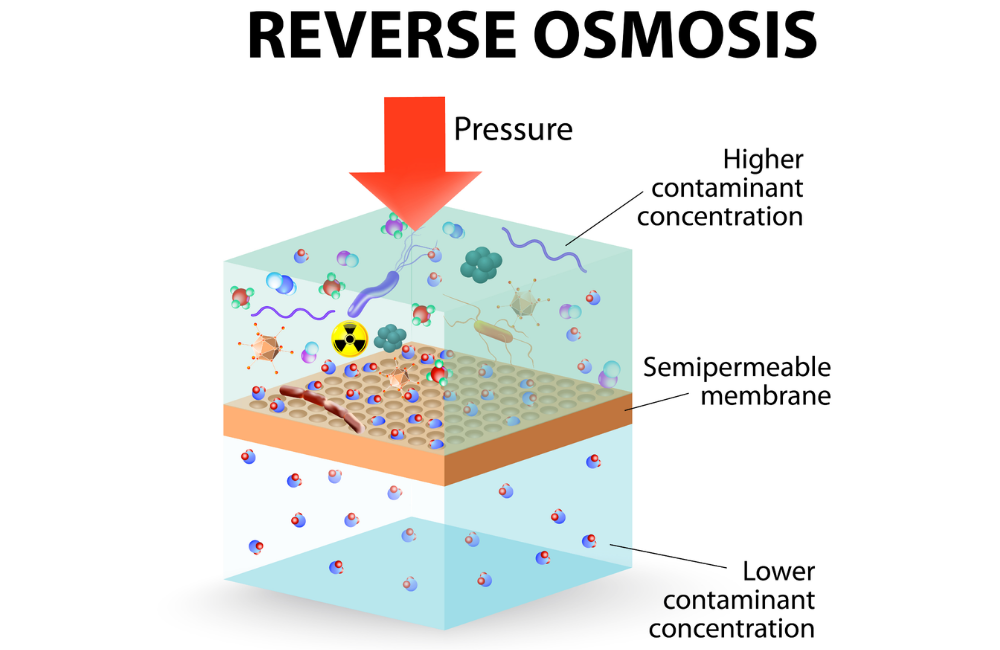How Does A Reverse Osmosis (RO) System Work:
Reverse osmosis is a method that can be applied to water filtration to help remove other minerals, substances, molecules and impurities from the water that runs throughout your house. RO systems vary depending on the brand and design, but in general, they perform the following functions: pre-filtration, reverse osmosis, drainage and storage.
Here are the steps of water filtration through a reverse osmosis drinking water system:
Step 1: Pre-Filtration
The system connects to drinking water lines. Feed water passes through a series of filters, usually carbon-based, designed to “catch” sediment and mineral deposits before flowing into the reverse osmosis chamber.
Step 2: Reverse Osmosis
Here, the feed water is pushed through the semipermeable membrane.
Think of the membrane as a tightly woven piece of fabric—one that looks virtually impermeable to the naked eye. To give you an idea of how stringent the membrane is, the diameter of a strand of human hair is roughly 100 microns wide.
Step 3 + 4: Drainage & Storage
The reverse osmosis system drains out all contaminants not caught in filters at each stage, and treated water is stored in a small tank until used.
What Are Common Contaminants Removed By Reverse Osmosis (RO)?
A high-performing RO system can remove up to 99% of dissolved contaminants found in feed water.
- Highly effective in removing protozoa (for example, Cryptosporidium, Giardia);
- Highly effective in removing bacteria (for example, Campylobacter, Salmonella, Shigella, E. coli);
- Highly effective in removing viruses (for example, Enteric, Hepatitis A, Norovirus, Rotavirus);
- Reverse Osmosis Systems will remove common chemical contaminants (metal ions, aqueous salts), including sodium, chloride, copper, chromium, and lead; may reduce arsenic, fluoride, radium, sulfate, calcium, magnesium, potassium, nitrate, and phosphorous.
Point of Use RO System
These systems are often installed as a final stage in any water treatment system or can be installed on their own to purify water used in cooking & drinking.
Pentair 575 Brochure
Pentair 575
Whole house RO Systems
These systems are most often used when Salt water has contaminated a fresh water well or where other forms of treatment are not possible. Typically expensive, they are often installed after all other solutions have been considered.
Axeon LP Pro Brochure
Axeon LP Pro

